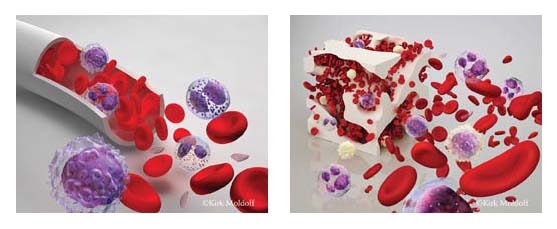What is MDS and who’s at risk?
June 2, 2016

Illustration by Kirk Moldoff
Bone marrow, a spongy tissue located within the hollow portions of bones, produces immature blood cells that develop into mature red blood cells, white blood cells and platelets. With myelodysplastic syndromes (MDS), this process is disrupted. People with MDS may experience infection, anemia, spontaneous bleeding or easy bruising. About 30 percent of people diagnosed with MDS will progress to acute myeloid leukemia (AML).
About 90 percent of cases occur with no identifiable cause. However, some known risk factors have been established. Myelodysplastic syndromes occur in people with prior cancers who have undergone chemotherapy and radiation treatments. These blood disorders have also been linked to exposure to heavy metals and other environmental hazards. They occur predominantly in people older than 60.
